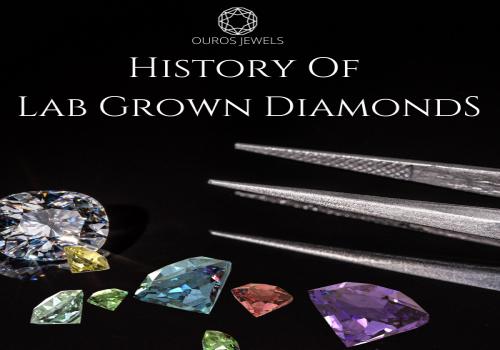History Of Lab Grown Diamonds

Lab Grown Diamond has always been in trend. Because it carries the same optical, physical, and chemical properties as Natural Diamonds. And also with higher affordability and known sourcing.
But the laboratory-produced stones that are currently available in the market are the outcome of decades of study by researchers throughout the world.
What are Lab Made Diamonds?
In a completely monitored, secure setting, a lab-grown diamond is formed in a laboratory. A sibling of a natural diamond is a lab created diamond. These diamonds are created with the application of carbon and gases in controlled chambers during procedures like HPHT (High Pressure and High Temperature) and CVD (Chemical Vapor Deposition).
The diamond seed (crystal) is positioned in the chamber at a pressure of around 800-2500°C. Diamond seeds developed and gained form after enduring this high temperature. The carbon is coated with a diamond seed as it grows. Unnecessary carbon is taken away from the seed using a laser. After that, the diamond is completely ready for cutting and polishing.
World’s First Lab Grown Diamond
In 1797, researchers discovered that diamonds are made entirely of carbon. The competition to produce the first synthetic diamond was sparked as a result. Many scientists throughout the 19th century tried to mimic the circumstances required for diamond creation in a lab environment. Despite several claims of success, scientists were unable to repeat these tests.
In 1954, GE produced the first synthetic diamonds that were scientifically verified to be man-made as part of a project known as "Project Superpressure." World War II delayed the development of this project, which started in the 1940s. To create diamonds from carbon, scientists have been experimenting with different processes, and temperatures, for years.
They exposed tiny seed crystals under pressures of 100,000 atm and temperatures of 1,600 degrees using a high-pressure belt press. In order to speed up the conversion of graphite to diamond, they dissolved graphite, a different mineral consisting of pure carbon, in metals such as iron, nickel, and cobalt.
They later acknowledged that they had created diamonds, and received favorable responses for that.
Special Note
There are more facts and information accessible on lab created diamonds. I've told you all, about the world's first lab-produced diamond in this post. However, click on the link if you're interested in learning more about how India began to make lab grown diamonds.
Post Your Ad Here
Comments